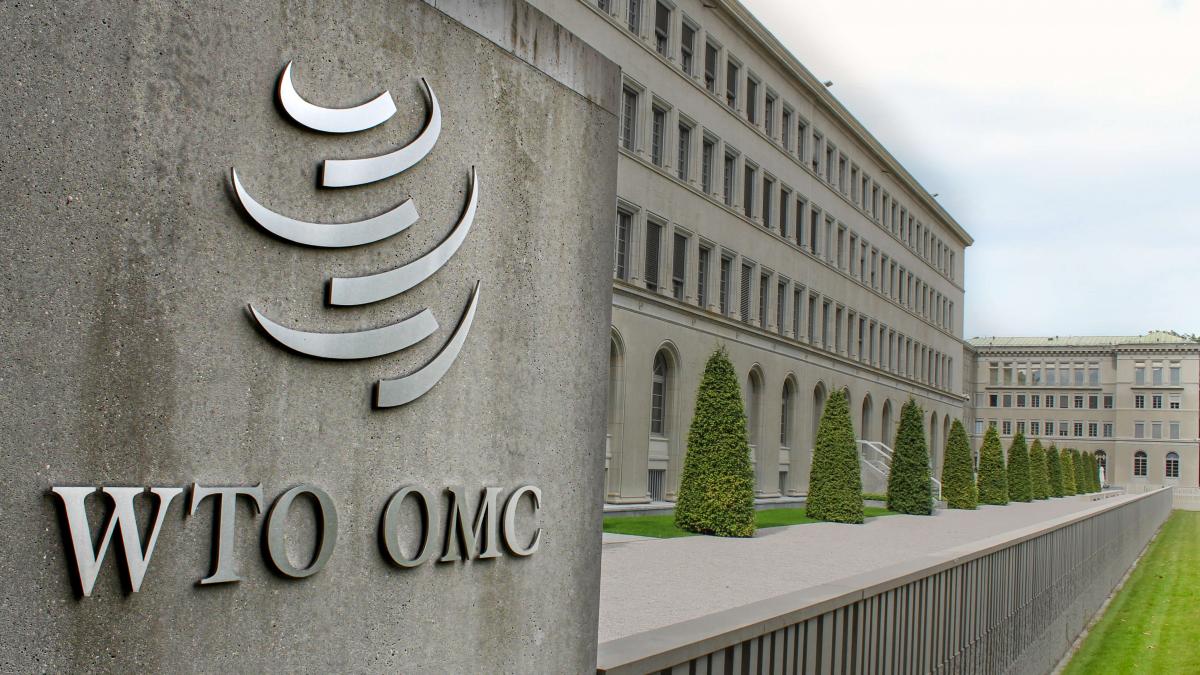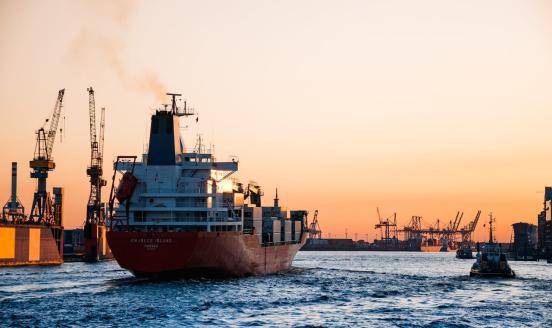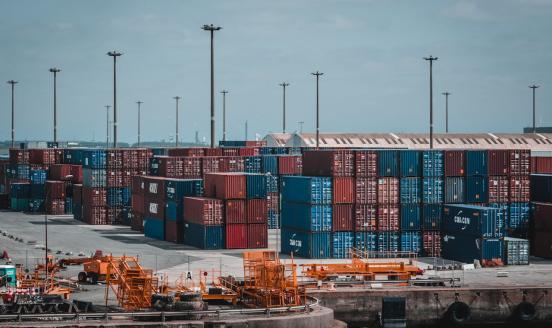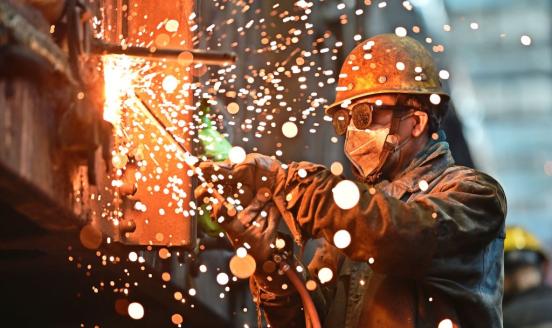High noon at the Appellate Body
This blog post explains the working method of the dispute settlement body, and then discusses the objections the US has raised against the Appellate B

The World Trade Organisation’s Appellate Body – which takes decisions on appeals against WTO dispute rulings – could collapse tomorrow (10 December), effectively removing the WTO’s enforcement mechanism. The collapse could happen because since 2017, the United States government has blocked new appointments of judges to the Appellate Body, which should have seven members but on 10 December will fall to one. In addition, the US has pushed WTO members to agree to only an annual (instead of biannual) budget for the organisation until the end of 2020 (including an 87% cut in the Appellate Body’s budget). This blog post explains the working method of the dispute settlement body, and then discusses the objections the US has raised against the Appellate Body, and the implications of its potential demise.
How does dispute settlement work at the WTO?
Disputes between WTO members are resolved through a three-stage procedure. The first is consultations between the disputing parties. These resolve about 40% of cases. However, if a dispute cannot be resolved through consultations, a panel is formed to issue a decision. These panels are deciding on violations of the offending party and recommend a resolution for the violation. In half of the cases for which a panel is established (or 29% of total disputes), a party appeals the panel’s decision. These appeals go to the normally seven-member Appellate Body, from which three members decide on each appeal. Previously, under the General Agreement on Tariffs and Trade, any dispute settlement had to be by consensus, which in effect gave a veto to the offending party. But the Appellate Body‘s reports are adopted unless there is consensus of the entire WTO membership against them. Most of the disputes in this system are between industrialised countries. Before the US-China trade war (1995 to 2016), roughly two thirds of WTO disputes were between OECD members, and 40% concerned the EU or the US. The success rate of litigation seems not to depend on the development status of the parties.
Since the early 2000s, the US government has become increasingly discontent with the system. This led first to the blocking of the reappointment of judges by the Obama administration (though replacement candidates were approved), and finally to the current administration blocking any new appointments to the Appellate Body.
Why is the US opposed to the Appellate Body?
US complaints against the WTO Appellate Body can be sorted into three broad categories: procedural, fundamental and political. Most official justifications for the blocking of appointments to the Appellate Body are procedural. After hearing a case, the Appellate Body has 90 days to take a decision and send a report to the Dispute Settlement Body. However, it has often taken considerably more time (in some cases almost a year). Moreover, in the past, members of the Appellate Body have decided on cases that they took on as members of the body after their term in office ended. Furthermore, the US has complained that Appellate Body members are paid too much.
The fundamental complaints concern the interpretation of the WTO treaties by the Appellate Body. The treaties governing the WTO (like any law) are subject to interpretation, and the distinction between ‘norm creation’ and ‘norm interpretation’ in this area can be difficult. The Appellate Body’s decisions create a body of WTO case law that serves as precedent for future decisions. The US complains that the Appellate Body goes too far in its interpretation of the WTO treaties, in particular in the area of antidumping. This debate is of importance because the US has lost more than 90% of cases that concerned its antidumping legislation and their application. According to the US administration, the Appellate Body does not have the right to create norms through legal precedents, which it thinks it is currently doing in this area.
Finally, there is in the US a long-standing political opposition to the multilateral rule-based international order in general, and the WTO in particular. There is the growing sense in the US political establishment of the advent of a technological ‘cold war’ against China, which is also to be fought in the economic sphere. The WTO does not have clear rules on the classification of states, and this allows countries to declare themselves ‘developing countries’, as China has done. Such countries have (among other benefits) more time to implement WTO obligations, and some special rights in relation to trade protection and asymmetrical market access. Most WTO countries have claimed this status, even some that are industrialised by most standards. The US perceives China’s developing country status at the WTO as giving it an unfair advantage. Furthermore, in order to contain China’s rise, the US is waging a trade war to block its rival’s economic progress. WTO rules impede the US from applying tariffs more freely and there is the risk that the US perceives that it would be in its geopolitical interests to be ‘freed’ from the shackles of the multilateral trading rules. The US could be using the Appellate Body crisis to get rid of the WTO Dispute Settlement Body.
The big question is whether the US blockade of the Appellate Body is only a negotiating stance to push reform of the WTO, or whether the US wants to upend the current system of multilateral trade dispute settlement. In particular, a policy by the US government of blocking the dispute settlement system, blocking the WTO’s budget and disregarding the WTO rules would have almost the same effect as a US withdrawal from the WTO, and would upend the multilateral trading system as we know it. In either scenario, the risk is a return to a more power-based trading system.
Without a functioning dispute settlement mechanism, the WTO rules would become mere norms that governments of larger economies could choose not to follow, increasing the uncertainty faced by companies and investors. This would be to the disadvantage of smaller WTO members, which would find it more difficult to negotiate in a more power-based system, but also bad for larger economies because it would reduce international trade and investment. The US-China trade war is already estimated to have cost the world economy 1 percentage point of growth through increased uncertainty.
The way forward?
The EU wants to preserve the current system, and together with a group of likeminded countries has made proposals for reform of the WTO Appellate Body. These included extending the number of judges from 7 to 9, measures aimed at ensuring the 90-day rule is followed and annual meetings between WTO members and Appellate Body judges to alleviate the concerns about Appellate Body reports serving as legal precedents. The European Union has also made agreements with Canada and Norway that specify an alternative dispute settlement mechanism that would be taken up when the Appellate Body ceases to be operational.
The problem of WTO reform and the reduced interest of the US in the multilateral system will in any case stay on the agenda. The EU should do everything to prevent the collapse of the multilateral system, but it has also to prepare for its decline. One important aspect is strengthening the toolbox for trade protection and investment screening. If there is no longer a functioning dispute settlement system, the EU will have to enforce its economic interests through other means. This means it needs to be ready to apply tariffs on its own as retaliation against infringements of trade agreements. One priority will be to avoid mini-trade wars that are currently prevented by the dispute settlement system.
Furthermore, the EU should negotiate with other willing parties to prepare alternative arrangements (such as with Norway and Canada). It is likely that other countries will be willing to agree to such arrangements once the Appellate Body collapses. So far, these agreements have been made within the WTO framework, using a clause of mutual binding recognition of arbitration boards, but it is also imaginable that an entirely different framework is needed. However, such an approach outside the WTO risks pushing the US out of the WTO.
Finally, the EU must develop a strategy for how it wants a WTO 2.0 trade system to develop. It is clear at this point that the current system of trade governance cannot be reformed. Therefore, the EU must continue with its approach of negotiating bilateral trade agreements. However, any alternative arrangement would be incomplete without the US, and therefore it is not enough just to engage in alternative dispute settlement agreements with likeminded medium-sized economies. Any arrangement that includes the US would most likely be less stringent than the current set-up, but as the largest economy in the world and Europe’s prime trading partner, the US has to be part of the solution. It will be an enormous challenge to find an arrangement that accommodates both the US and China, but avoids encouraging protectionism.



